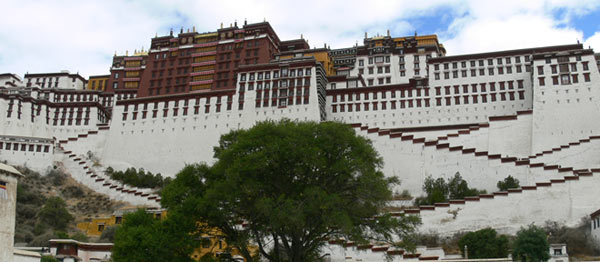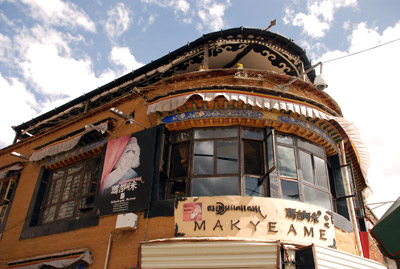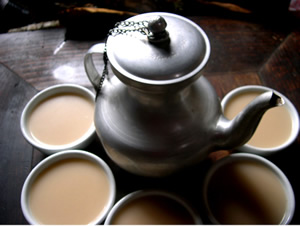

Like Taj Mahal of Shah Jahan and the Hanging Gardens of Babylon by Nebuchadnezzar II, the Potala Palace is built as a symbol of eternal love between Songtsän Gampo, the Emperor of Tibet and Princess Wencheng of the Tang Dynasty. Songtsän Gampo was the founder of the Tibetan Empire and considered adept at diplomacy. The marriage of Princess Wencheng and him makes peace between China and Tibet prevailed for the remainder of his reign.
Although political marriage or “heqin” it is, legendary love stories of them are told from one generation to another in Tibet. The Potala Palace is constructed to please Princess Wencheng and to cure her homesickness. Now it symbolizes Tibetan Buddhism and its central role in traditional administration of Tibet.


Makye Ame, a restaurant located around the southeast corner of Lhasa’s Barkhor Bazzar is over 300 years old. Makye Ame has witnessed a romantic legend of the 6th Dalai Lama. The term of Makye Ame comes from one of his poems, meaning “pure lady” or “beautiful ancient dream” in Tibetan language. It is told one day the 6th Dalai Lama was having a rest there when a pretty young girl unveiled the door curtain, looking inside. Her moon-like face shone the tavern, as well as the Dalai Lama’s heart. But after that, he never saw that girl again. The only thing Makye Ame left him is miss and a love poem:
From the mountain peaks in the east,
The silvery moon has peeped out.
And the face of that young maiden,
Has gradually appeared in my mind.
In the first place it is best not to see,
Then there is no chance to fall in love.
In the second place it is best not to become intimate,
Then you will not be forlorn when you miss.
This poem now is a famous folk song. Here is a youtube video of this love song, sang by Jin Tan.


Drinking butter tea is a regular part of Tibetan life. It is always served as a gesture of hospitality, and consumed throughout the day. There is a Tibetan mythology behind butter tea. There were tribal fights in ancient Tibet. One princess and one prince from two hostile tribes fell in love. The two lovers wouldn’t betray their people. They committed suicide out of love. The princess turned to the tea in the tree and the prince turned to the salt in the lake. A truce was declared between the two tribes. After that, people made butter tea which made of butter, tea and salt, to memorize the lovers, whom would be mingled with each other and forever together.
